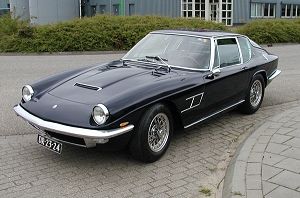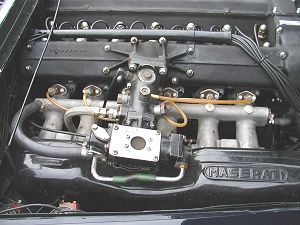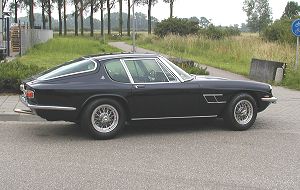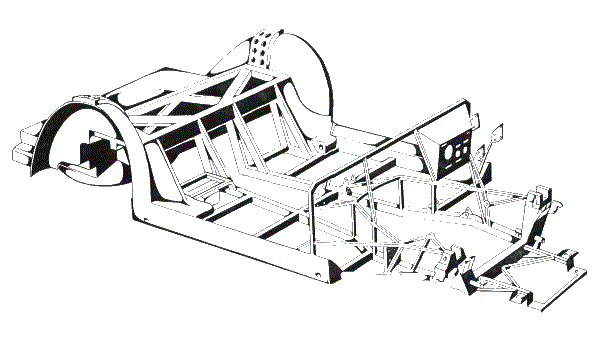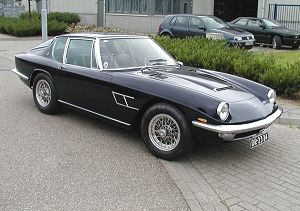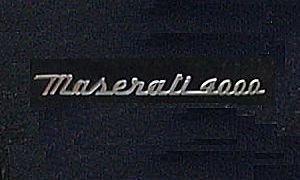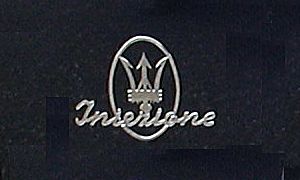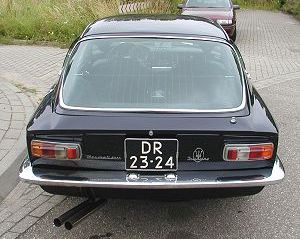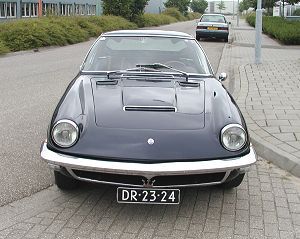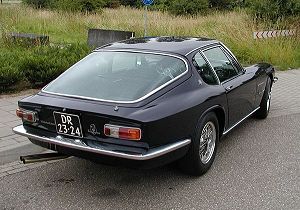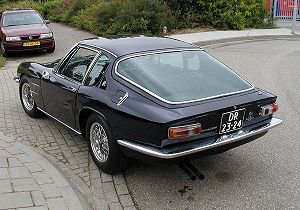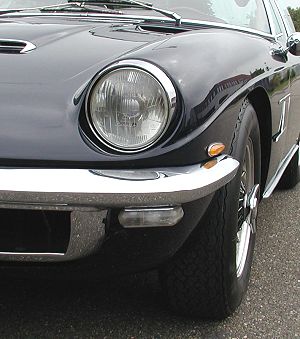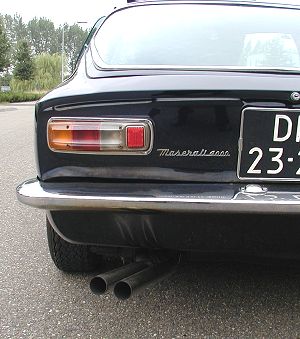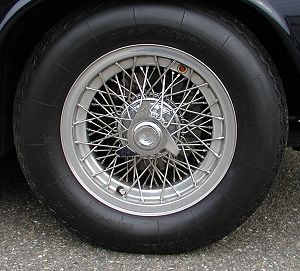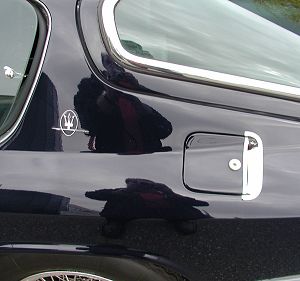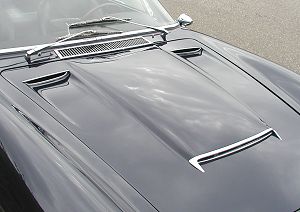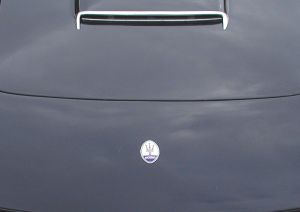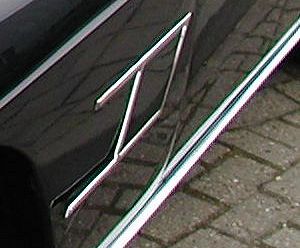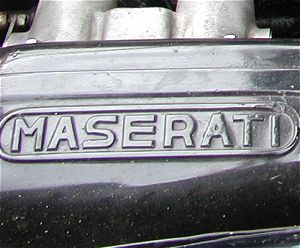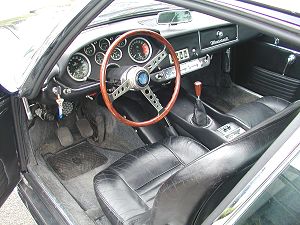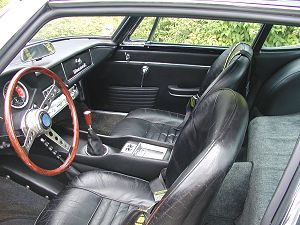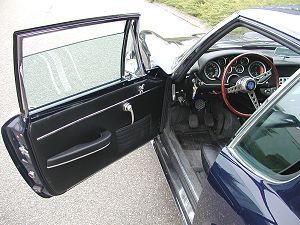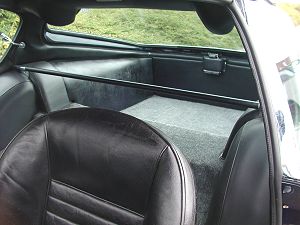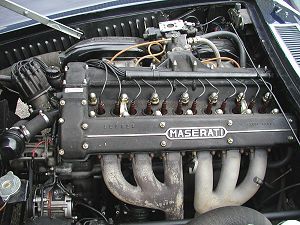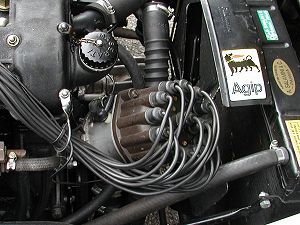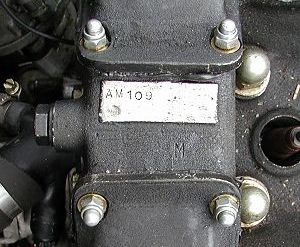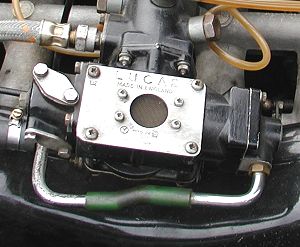| The Mistral
"Mistral...a cold northerly wind of southern France." |
 |
||
|
|
|||
|
Mistral, Maestrale in Italian, the name of a strong cold northerly wind of southern France that immediately conjured up the illusion of speed! |
 A scan of the brochure contained in the 'Archivio Maserati' |
Frua's new creation, originally named the 'Due Posti', was first shown in a preview at the Salone Internazionale dell'Automobile di Torino in November 1963. This classic Italian granturismo entered production in 1964 and remained so until 1970, this seven years of production was proof of the beauty and originality of its design: it is in the view of many, the most beautiful body to come from Pietro Frua of Turin. It was at the suggestion of Col. Simone, the French Maserati Concessionaire, that the Due Posti should be renamed Mistral. |
||
The engine was a direct descendent of the 6-cylinder unit mounted in the Tipo 350 S sports racer and boasted a close relationship with the engine that powered the Tipo 250F F1 single-seater, driven by Manuel Fangio, to Maserati's one and only F1 World Championship in 1957. |
The engine in George's car is fitted with the original Lucas mechanical fuel injection system. Although the Lucas fuel injection system enhanced performance, some owners, especially in North America, experienced reliability problems and replaced the original fuel injection with the more reliable Weber carburettors. George tells me that he has had no problems whatsoever! |
The drivetrain of the Mistral was traditional Maserati, a rigid Salisbury axle suspended with leaf springs (limited-slip differential available as an option), ZF 5-speed gearbox, dics brakes all round and Borrani wire wheels (later models were fitted with the same light alloy wheels fitted on the Ghibli). |
|||
The price, announced at the Salone di Torino in 1963, was around 6 million lire and for delivery Maserati's anxious customers had to wait until the spring of 1964 when the Spyder version was introduced at the Salone di Ginevra. Again the work of Frua who with great skill succeeded in retaining the splendid lines of the coupé by replacing the large windowed 'hatchback' with a classically styled conventional boot lid, the hood being hinged immediately behind the front passengers. Also available, as an optional extra, was a neat looking hard-top which was particularly handy in the winter. |
|||
| TECHNICAL DATA - TIPO 109 | |
| Body type | 2-seater Coupé |
| Production years | From 1963 to 1970 |
| Engine | Front engined 6 cylinder in-line |
| Engine capacity | 3694.4 cc - 4012.2 cc |
| Bore and stroke | 86 x 106 mm - 88 x 110 mm |
| Compression ratio | 8.8:1 |
| Maximum power | 245-bhp @ 5500 rpm (255 bhp @ 5200 rpm) |
| Distribution | Two overhead camshafts, two valves per cylinder |
| Induction system | Lucas fuel injection |
| Ignition | Double with Marelli distributor |
| Lubrification | Forced with pressure pump |
| Transmission | Rear wheel drive |
| Differential | Salisbury rigid axle |
| Clutch | Dry single plate |
| Gearbox | ZF 5-speed and reverse |
| Chassis | Welded box section |
| Front suspension:- | Independent wheels, coil-springs and telescopic shock-absorbers |
| Rear suspension:- | Salisbury rigid axle, semi-elliptical leaf-springs and telescopic shock-absorbers |
| Brakes | Servo assisted disc brakes on all four wheels |
| Wheelbase | 2400 mm |
| Wheel tracks | Front 1390 mm Rear 1364 mm |
| Tyres | Front:- 205 x 15 Rear:- 205 x 15 |
| Dry weight | 1200 kg |
| Maximum speed | 245 kph (260 kph) |
| Models constructed | 830 Coupés and 125 Spyders |
 |
|
To enter Enrico's Maserati Pages CLICK HERE! Copyright: Enrico's Maserati Pages - © 2000-2004. All rights reserved. |
